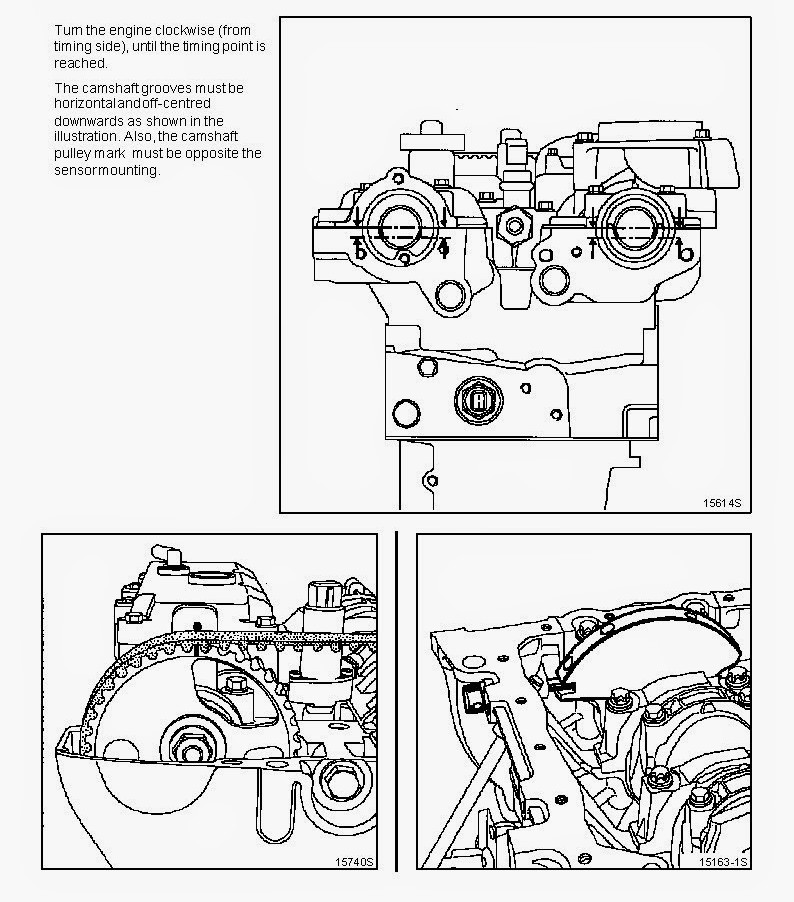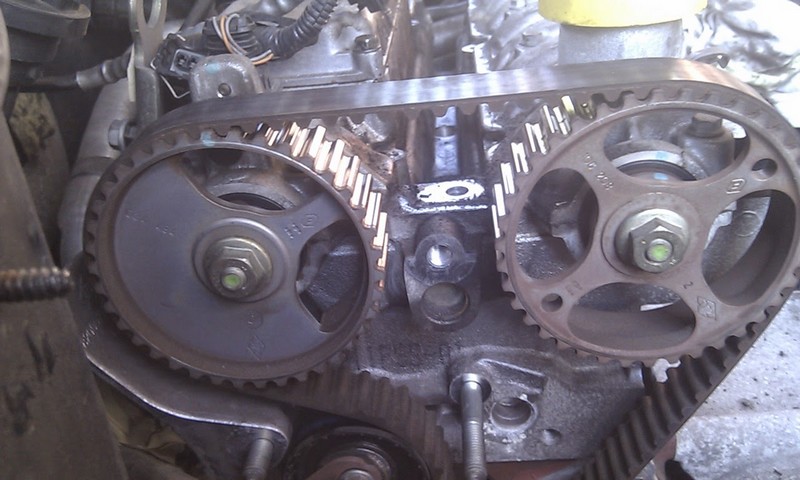Engine timing
Engine timing
Replacing the timing on the idE engine is not too complicated but sometimes you need to use an impact wrench to unscrew the nut of the crankshaft pulley. A camshaft locking tool is needed to correctly set the timing, without it the correct setting is impossible. Without locking, the timing pulleys will reset themselves when the belt is removed due to the tension of the valve springs. All timing belt pulleys do not have a locating key, so we also need the shaft stop that comes with the timing lock kit, but it is soft and prone to bending, so it is better to use an appropriate wrench extension or an 8mm drill bit. Camshaft sprockets should be tightened to 30Nm and then tightened by 90 °. Tighten the crankshaft pulley with a torque of 20Nm, and then tighten it by 115 ° +/- 10 °.
The kit includes, in the case of Megane IDE: belt, 3 rollers, tensioner. In the case of Laguna, the belt, pulley and tensioner.
Before replacing the timing, remove the right front wheel and put the car on a shaft. Remove the cover providing access to the pulley bolt. Then place a jack under the engine and raise it slightly. Then unscrew the complete engine mount with the cushion. Now you can remove the metal and then the plastic timing cover. You can also lift the engine a bit upwards as it will make it easier to remove the timing gear.
Then remove the high pressure pump and the exhaust valve shaft cap. While turning the shaft, set it so that the horizontal cuts on the shafts are in a straight line below the axis of rotation. In this position, we proceed to block the shaft.
Under the ignition coil, at the very bottom of the block, there is a torx screw which must be unscrewed and the shaft lock should be inserted into the hole. Then check that the shaft is blocked by trying to move it both ways. We can now put the roller lock and unscrew the pulley, release the roller tensioner and remove the belt itself.
Correct alignment of the exhaust valve shaft pulley. After installing the belt and removing the locks, to be sure, turn the shaft several times and check that there is no collision and that the settings of the rollers and the pulley are correct. Then tighten the belt with an Allen key and tighten the tensioner bolt.

Renault setting

Autodata setting


Timing bełt tensiong
The marks on the tensioner are used to correctly set the belt tension. Before tensioning, I turned the crankshaft several times so that the belt is correctly positioned on the wheels. Then use the hex key to tighten the belt, observing the marks on the tensioner, if they match, tighten the tensioner (28Nm). The tension should be checked again by turning the shaft several times. If the marks still match, the belt has been tensioned correctly.
Renault original timing belt. Recommended replacement every 80 thousand. km and at least every 5 years. If a different belt is used, it is recommended to reduce the service life to 60,000. km.
Valve seals
When replacing the timing belt, it is best to check the condition of the valve seals, as they often wear out prematurely. After removing the intake manifold, you can see the condition of the valves through the openings of the intake ducts. The photos show the intake valves in the engine where the seals are just starting to come off and with damaged seals which led to the valves sticking completely.
Valve seals can be replaced without removing the engine head, just hold the valve with narrow pliers so that it does not fall after removing the spring.

